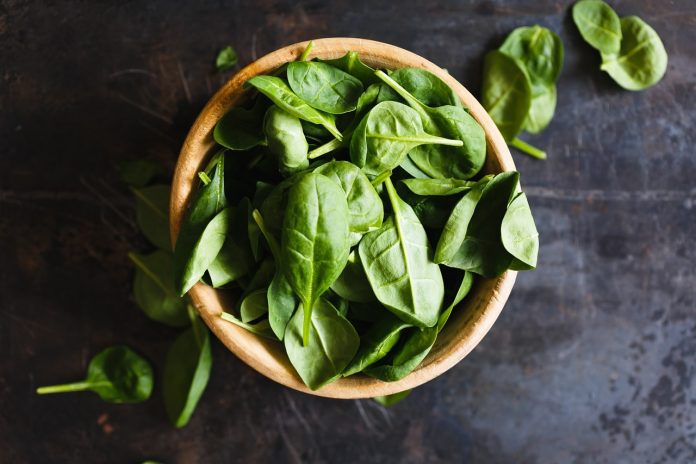
The Fitness Partner Connection Jumpsite receives quite a few nutrition questions. We usually answer the basic ones ourselves and send the more complex cases to Ask the Dietitian or the Academy of Nutrition and Dietetics website. However, I just received a really basic question that perplexed me, so I had to ask you personally.
We’d be oh so grateful if you could humor us for a moment and enlighten everyone about the official role of the potato in the pyramid. I’ll pass your answer along to our visitor and refer her back to your site for more information. Ask the Dietitian is a gold mine of great information. BTW we send people there all the time.
Here’s the question: My daughter’s preschool recently said the meal I had provided for her did not meet all of the food groups. I sent ham, fried potatoes, green beans, fresh carrots, and milk. They claim that the fried potatoes are considered a vegetable and not a bread/bread alternative. I was always under the impression that potatoes are complex carbohydrates and do not meet the requirements of vegetables. Please advise.
Thanks to Fitness Partner Connection Jumpsite for the feedback.
The confusion about potatoes is because they are a vegetable in My Plate and school lunch programs, a bread exchange in the diabetic exchange list and a complex carbohydrate when comparing food sources of carbohydrate in carbohydrate controlled eating plans. School lunch programs use specific criteria for planning menus and have strict guidelines from the federal government on what constitutes a school lunch. It was probably these guidelines that prompted the critique of your daughter’s lunch which is not under their control if you sent lunch with her to school.
The pyramid recommended servings are per day, not per meal. I think you gave her a pretty good lunch. You shouldn’t be chastised by the preschool since they don’t know what your daughter eats the rest of the day. Besides, she got 3 vegetables in 1 meal! A preschooler needs between meal snacks which could consist of fruit. To complete your daughter’s eating plan, I would also recommend you send some fruit such as a juice box (100% fruit juice), fresh or dried fruit.
The Basic Four which was used before My Plate combined fruits and vegetables in one list. Now in My Plate, fruits and vegetables are in separate groups. My Plate has evolved into a Food Guidance System (formerly called the Food Guide Pyramid). It was designed to guide people to eat an adequate amount of vitamins and minerals per day (i.e. a balanced eating plan) and eat a variety of foods for health. The diabetic exchange list was designed for persons with diabetes to control their blood glucose and for overweight people for weight control by grouping foods with similar amounts of protein, fat, and carbohydrate in the same exchange group. Some people are concerned with eating complex rather than simple carbohydrates because they want to limit the amount of sugar in their eating plan. These various methods of meal planning can confuse people wanting to eat healthily. Potatoes are a great food to eat for all these meal plan types.
Funny the preschool made no mention of your daughter’s fried potatoes. Sometimes, fat or diet conscious adults forget that kids need some fat. The calorie concentration in low-fat foods doesn’t provide sufficient calories for growing children and teens.
The only school lunch food group missing in the lunch you sent with your daughter was the grain group. Here are the USDA school lunch guidelines for preschool children:
| 1 to 2 years | 3 to 5 years |
| 4 ounces milk | 6 ounces milk, must be low fat or non-fat for children older than 2 years |
| 1 ounce meat, poultry, or fish or equivalent such as cheese, 1/2 whole egg, 1/4 cup cooked dried beans or peas, 2 tablespoons peanut butter, 1/2 ounce nuts or seeds or 4 ounces yogurt | 1 1/2 ounces meat, poultry, or fish or equivalent such as cheese, 3/4 whole egg, 3/8 cup cooked dried beans or peas, 3 tablespoons peanut butter, 3/4 ounce nuts or seeds or 6 ounces yogurt |
| 2 servings of vegetables, fruits or juice which must be full-strength (1/4 cup total) | 2 servings of vegetables, fruits or juice which must be full-strength (1/2 cup total) |
| 1 serving, must be whole grain or enriched meal/flour. A serving is a 1/2 slice of bread or an equivalent serving of biscuits, rolls, etc., or 1/4 cup of cereal cold or hot, 1/4 cup pasta, noodles or grains | 1 serving, must be whole grain or enriched meal/flour. A serving is a 1/2 slice of bread or an equivalent serving of biscuits, rolls, etc., or 1/3 cup of cereal cold, 1/4 cup hot cereal, pasta, noodles or grains |



